The flute has many main features that you will see in all models that you can purchase but there are also a few special features that you will only see on intermediate and professional flutes!
Before going into more minute detail on the flute’s features it is best to look at the three main sections of the flute. These main sections are what you will immediately see when you open that box!
What are the three main parts on the flute?
- The head joint – this is at the top of the flute and is where you will place your lips to blow the air over the instrument
- The body – this is where the majority of the keys are located
- The foot joint – this is at the bottom of the flute and has the lower notes!
It’s kind of like a little person!
Now let’s look at these in more detail:
Main flute feature : The Head joint
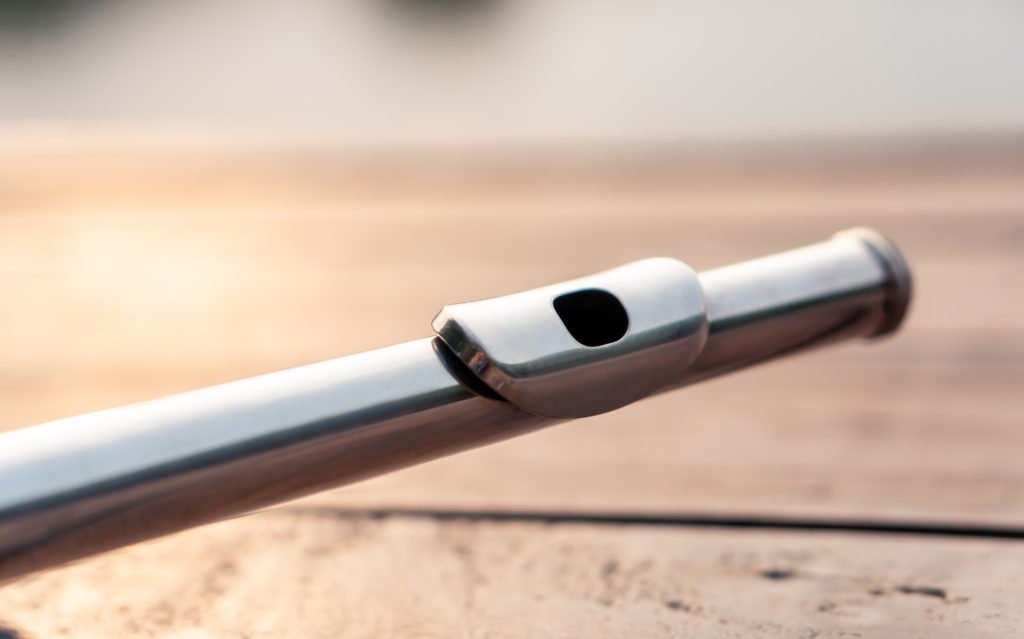
We seal the head joint with a cork at the top!
This cork acts very much like a plug. This is sometimes, although rarely, made out of plastic, metal or wood.
The cork in your head joint should be placed at 17.3mm (0.68in) in depth, by doing this your flute will be at the factory recommended measurement. However, it is possible to adjust this to improve the tuning even more, if needed.
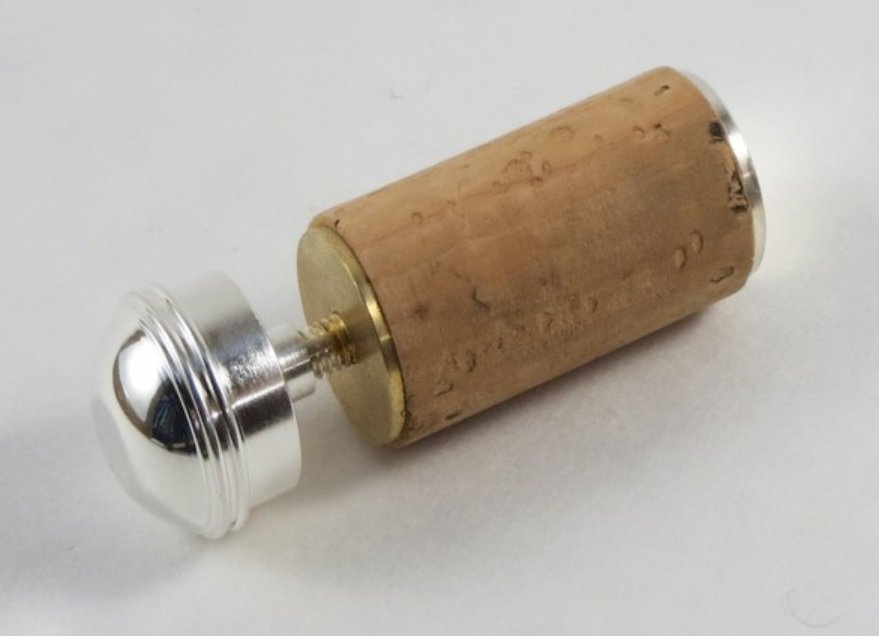
The best way to really effect the tuning though is by actually moving the head joint in and out. Alternatively, you can make changes to your embouchure to affect the tuning.
The crown holds your cork in place!
The crown is a little bit like a cap at the end of the head joint. This crown unscrews so that you can see the cork. The crown helps to keep the cork in position. You can see this in the image above!
On the head joint we also have the Lip plate.
The lip plate is the part of the flute that is in contact with the performer’s lips.

Then we have the Riser
The riser is the metal section that raises the lip plate from the head joint tube.
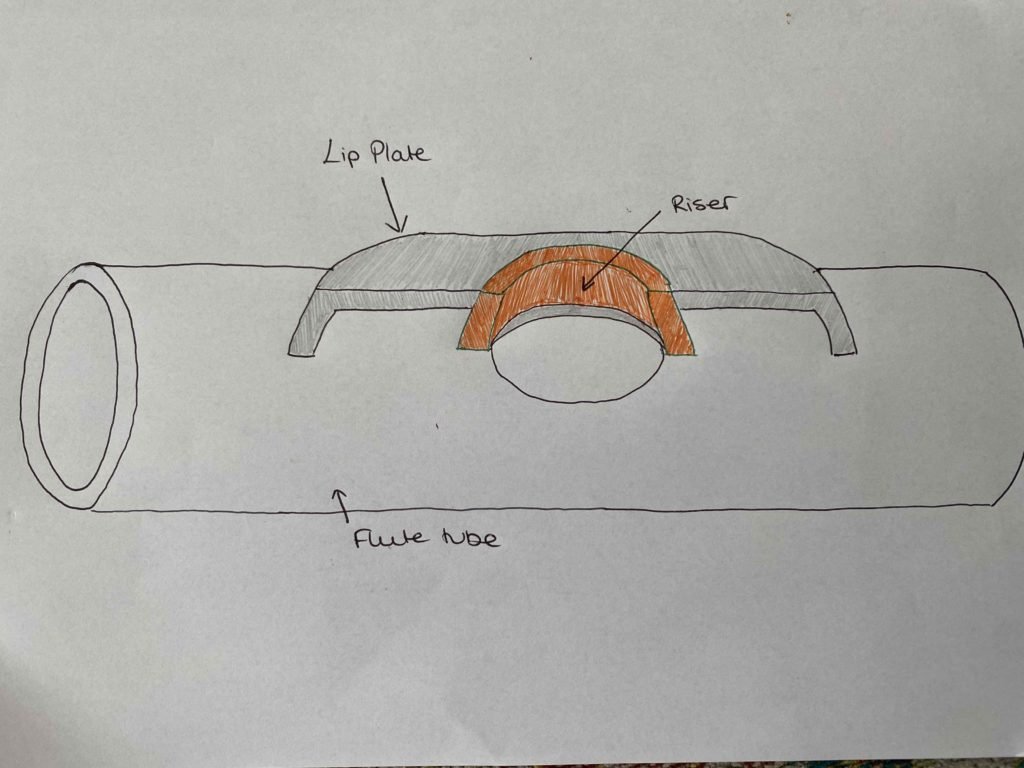
For such a small part of the flute that’s a lot of features! We could talk all day about the head joint and most importantly the shape of the hole we blow over but let’s leave that for another blog post!
Now let’s look at the features of the body of the flute.
Main flute feature: Flute body
The flute body itself is just a hollow tube! This tube can be made out of several different types of metal, but the most common metal you will see is silver! If your flute is a beginner model you will notice that it is most likely to be made out of silver-plated nickel. If you’re thinking about buying your first flute, here is our beginners’ guide to choosing a flute.
The body has the majority of the keys on. But these keys are not always the same on all flutes. It is possible for a flute player to choose different types of keys – open or closed!
Open and Closed Hole Keys
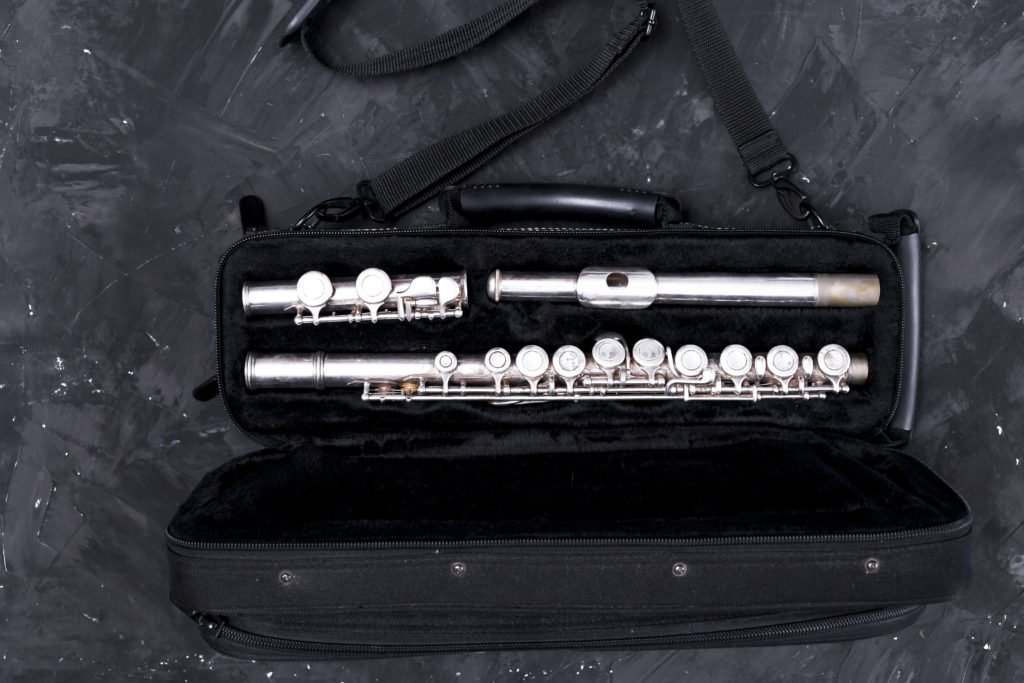
A closed hole key, otherwise known as a plateau key, means what It says on the tin, the key is covered, there is no hole!
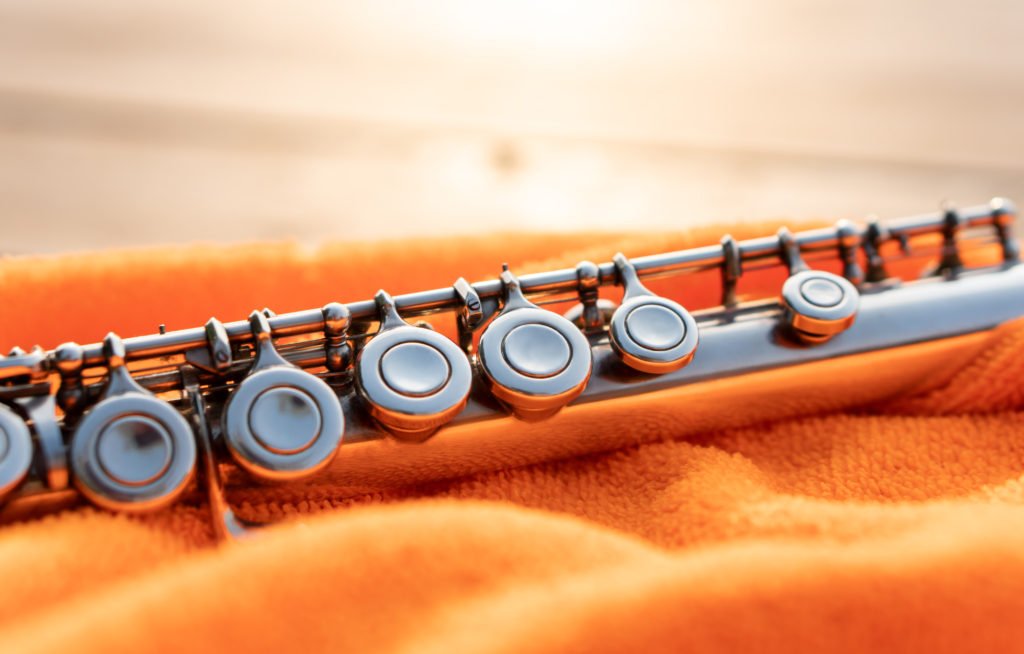
An open hole key means a key with a hole in the centre!
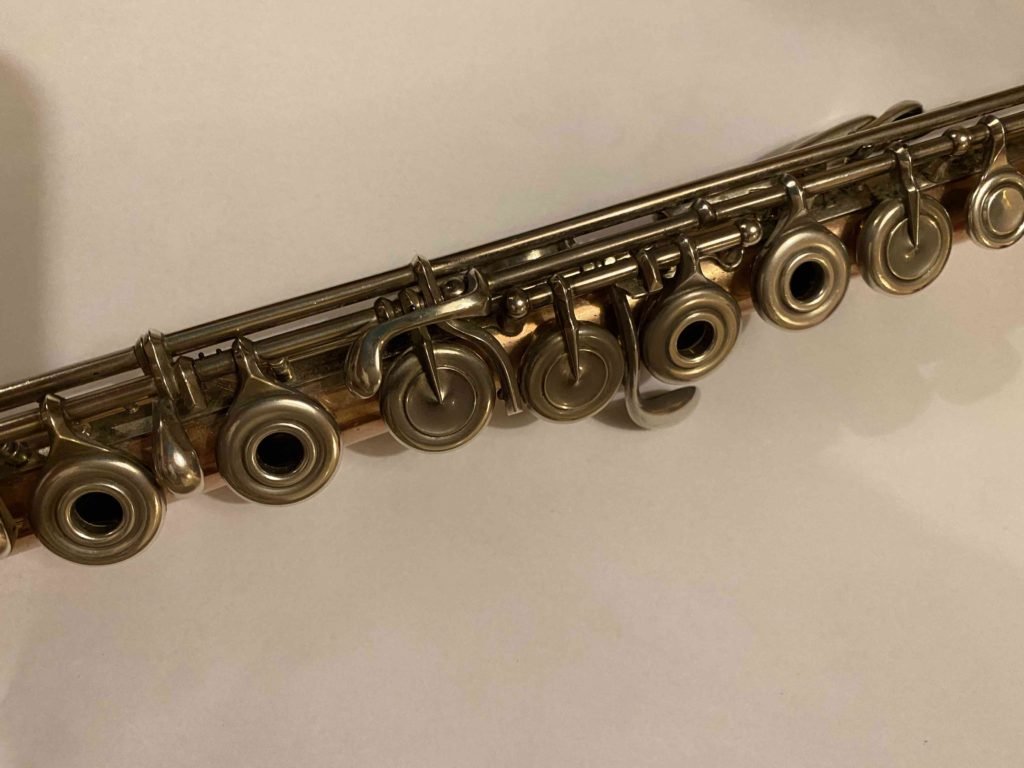
It is most common for beginners to have closed holes and as you progress on the flute, most intermediate and professional flutes have open hole keys.
Pads
Underneath these keys we have pads. Pads ensure that you don’t get that noise of metal on metal when you play the different notes! This can be made of different materials but all will be waterproof and help seal the key to the tube when you press it.
As you know there are quite a few keys on this section of the flute. These keys have two common positions that you can choose from when purchasing a flute:
Inline and Offset G key
Inline G – this is the original position. An inline G simply means that the G key is in line with the rest of the keys! The G is where the third finger of the left hand goes.
Offset G – this is perhaps the most common alignment of keys you will see, particularly on beginner models. An offset G is where the G key is extended in front of the other two left hand keys, it is moved nearer to the G# key. Having this key extended forward makes it slightly easier to play as it fits the natural shape of the hand better.
In the image below you can see the two different G key positions. On the top you can see the inline G and on the bottom the offset G.

Bb thumb key
The body of the flute also includes a Bb thumb key. This is at the back of the flute and you will play it with the left-hand thumb. Using the Bb thumb key, allows the player to easily play the note B flat. This key is particularly useful if you are playing a piece with a flat key signature! This key is considered completely standard on all modern flutes that you will find.

Split E Mechanism
These keys can also have a special mechanism called the split E mechanism!
This split E mechanism is a system where the second G key (positioned below the G# key) is closed when the right middle finger key is pressed down. Having this mechanism enables the performer to achieve a much clearer third octave E. This mechanism is usually standard on most flutes but is sometimes not used on many intermediate and professional flutes as it can reduce the quality of the third octave F#.
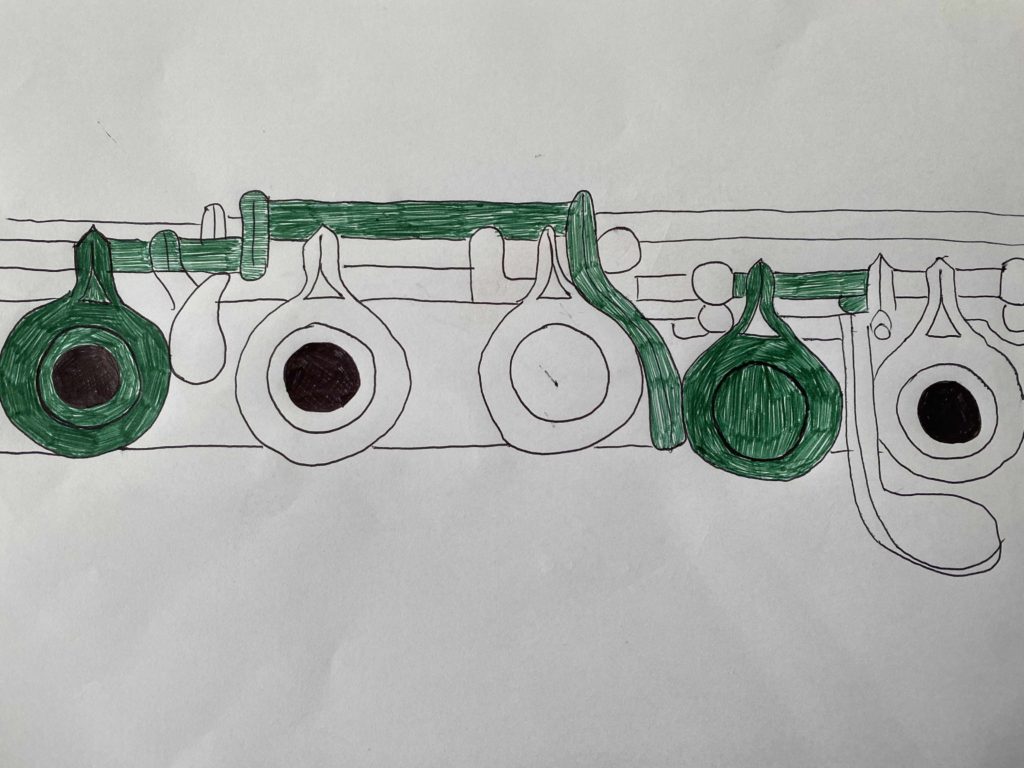
Trill Keys
The keys on the body also include two small keys called the Trill keys! These are two very small, tear drop shaped, keys, these are placed between the right-hand keys on the body. The first trill key enables you to trill easily between C and D. The second trill key enables an easy C to D# trill. You can also use these trill keys for high Bb and B.

On professional model flutes there are also options for additional trill keys.
Rods, Springs, Screws and Pointed Arms!
All of the keys on the flute are held in position by rods, springs and screws, but we also have something called pointed arms. These pointed arms connect your keys to the rods on the flute, which are pointed and extend out into the keys centre. You will most typically see this on professional flutes!
Sometimes we refer to a flute as a ‘French model’. This is a flute with pointed French style arms and open hole keys which is different to the plateau style that has closed holes.
Now onto the final section of the flute:
main flute feature: the foot joint
The last section of the flute is the foot joint and this is right at the bottom of the flute. There are two different types of foot joint and these are the C foot and the B foot.
The C foot and the B foot
The C foot goes down to middle C and the B foot goes down to the B one note below middle C!
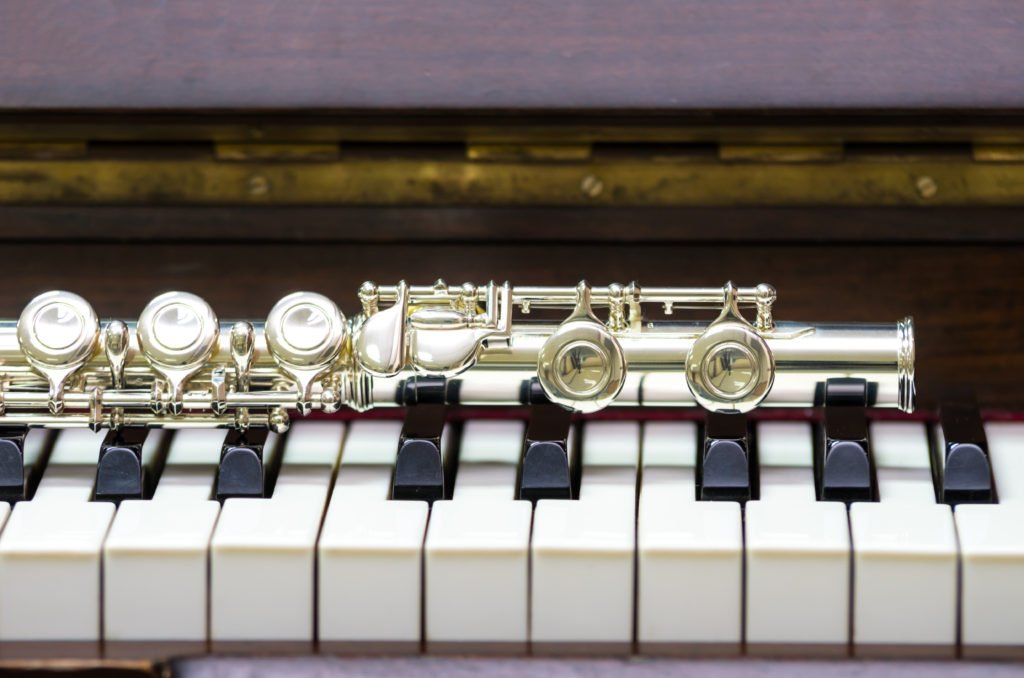
On professional flutes, sometimes you will see a D# roller added, this is added to the E key on the foot joint and makes it easier to move from Eb/D# to Db/C# and to C.
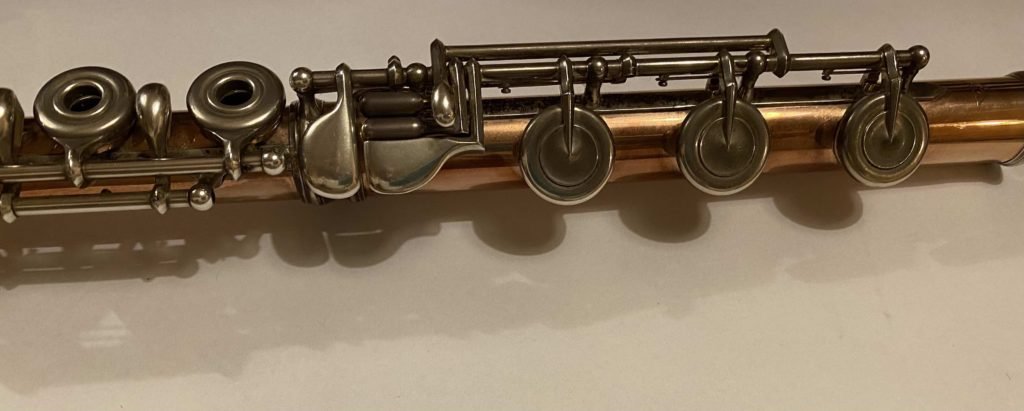
On B foot joints there is also the option to have a gizmo key, this assists in helping to play the C7.
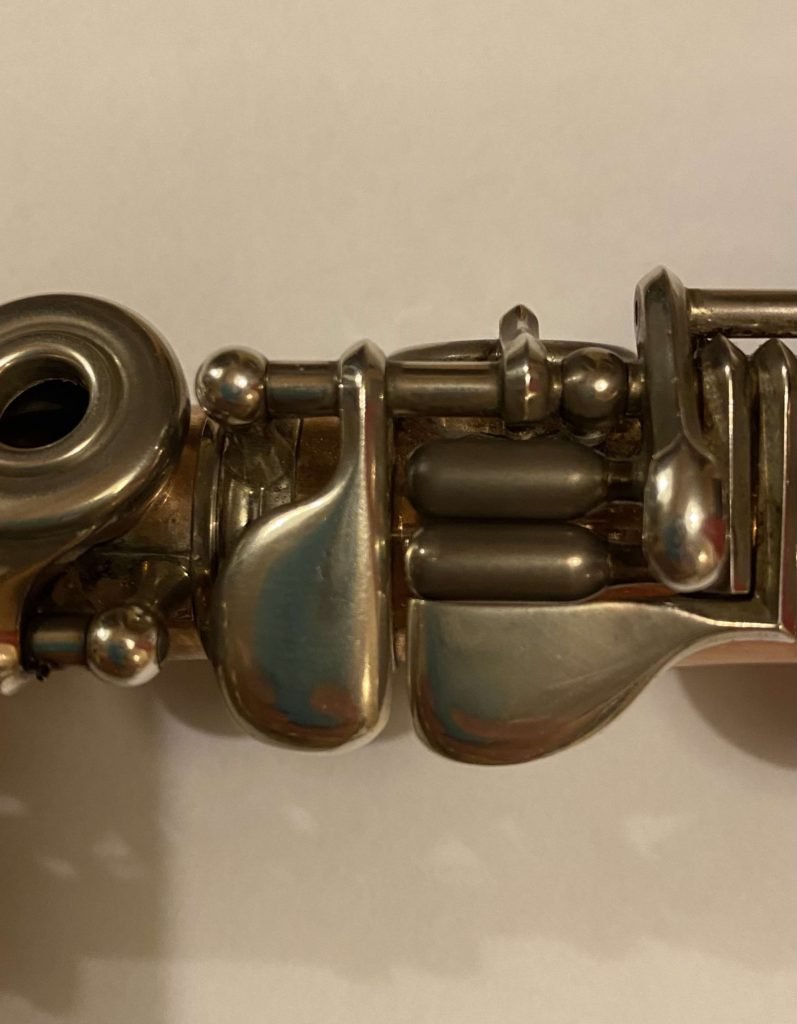
I hope that has given you a nice clear overview of the different features a flute has! Let me know if you have any questions in the comments!
If you are learning the flute then music theory is an important part of becoming a musician. We have blog posts covering all scales and key signatures to support you on your musical journey.
Or if you want worksheets and practice activities, including interactive quizzes, check out our music theory resource pages.
